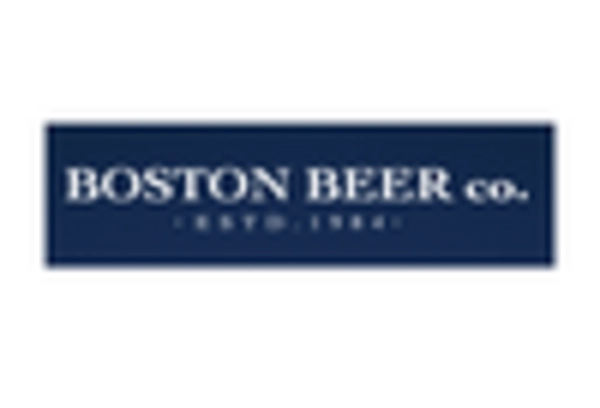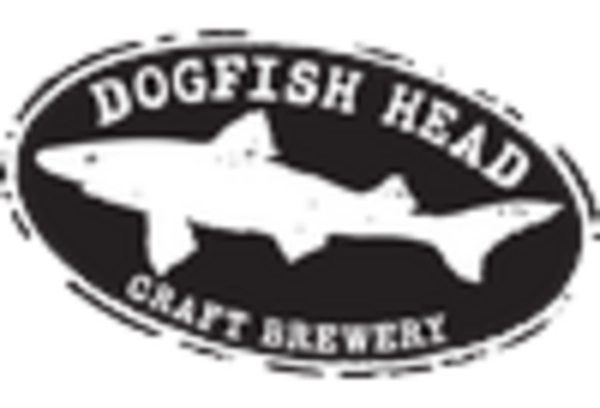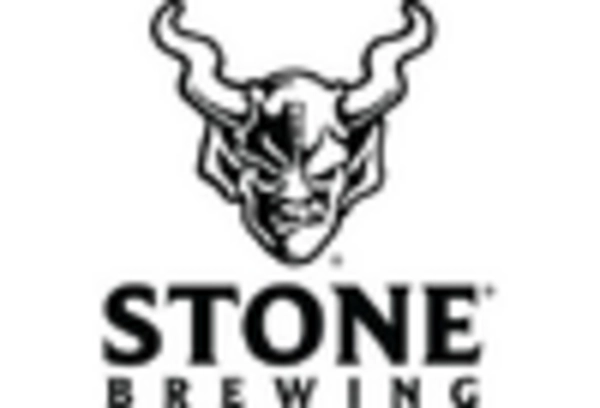Increased Distribution Channels
The US craft beer market is benefiting from an expansion of distribution channels, which is facilitating greater accessibility for consumers. With the rise of e-commerce and partnerships with local retailers, craft breweries are finding new avenues to reach their target audience. Recent data suggests that craft beer sales through online platforms have increased by approximately 25% in the past year, indicating a shift in consumer purchasing behavior. This increased accessibility not only allows consumers to discover new brands but also enables breweries to expand their market reach beyond local boundaries. As distribution channels continue to evolve, the US craft beer market is poised for further growth, as more consumers gain access to a wider variety of craft beer options.
Health Consciousness Among Consumers
The US craft beer market is witnessing a growing trend of health consciousness among consumers, which is influencing their purchasing decisions. As more individuals become aware of the nutritional content of their beverages, there is a rising demand for craft beers that offer lower calorie options and organic ingredients. Recent surveys indicate that nearly 40% of craft beer drinkers are actively seeking healthier alternatives, prompting breweries to innovate and create products that align with these preferences. This shift towards health-oriented craft beers not only caters to the evolving tastes of consumers but also positions the US craft beer market favorably in a landscape increasingly dominated by health-focused products. As breweries adapt to these changing consumer demands, they may find new opportunities for growth and market expansion.
Consumer Preference for Local Products
The US craft beer market is experiencing a notable shift towards local products, as consumers increasingly favor locally brewed beers over mass-produced alternatives. This trend is driven by a desire to support local economies and a growing awareness of the environmental impact associated with long-distance transportation. According to recent data, approximately 60% of craft beer drinkers express a preference for local breweries, which has led to a surge in the number of microbreweries and brewpubs across the country. This local focus not only enhances community engagement but also fosters a unique identity for craft beer brands, allowing them to differentiate themselves in a competitive market. As consumers continue to prioritize local sourcing, the US craft beer market is likely to see sustained growth, with local breweries capturing an increasing share of the overall beer market.
Diverse Flavor Profiles and Experimentation
The US craft beer market is characterized by a remarkable diversity of flavor profiles, which continues to attract a wide range of consumers. Breweries are increasingly experimenting with unique ingredients and brewing techniques, resulting in innovative products that challenge traditional beer styles. This trend is reflected in the fact that over 50% of craft beer drinkers express a preference for trying new and unusual flavors. The willingness of consumers to explore diverse taste experiences has led to the emergence of niche markets within the craft beer sector, such as sour beers and barrel-aged varieties. As breweries capitalize on this trend, they are likely to enhance their brand loyalty and customer engagement, further solidifying their position in the US craft beer market.
Cultural Shift Towards Craft Beer Appreciation
The US craft beer market is experiencing a cultural shift that emphasizes the appreciation of craft brewing as an art form. This evolving mindset is fostering a community of enthusiasts who value quality, craftsmanship, and unique brewing techniques. Events such as beer festivals and tasting events are becoming increasingly popular, drawing attention to the artistry involved in brewing. Recent statistics indicate that attendance at craft beer festivals has grown by over 30% in the last few years, reflecting a heightened interest in craft beer culture. This cultural appreciation not only enhances consumer engagement but also encourages breweries to invest in quality and innovation. As this trend continues, the US craft beer market is likely to thrive, driven by a passionate consumer base that values the stories and craftsmanship behind each brew.

















Leave a Comment